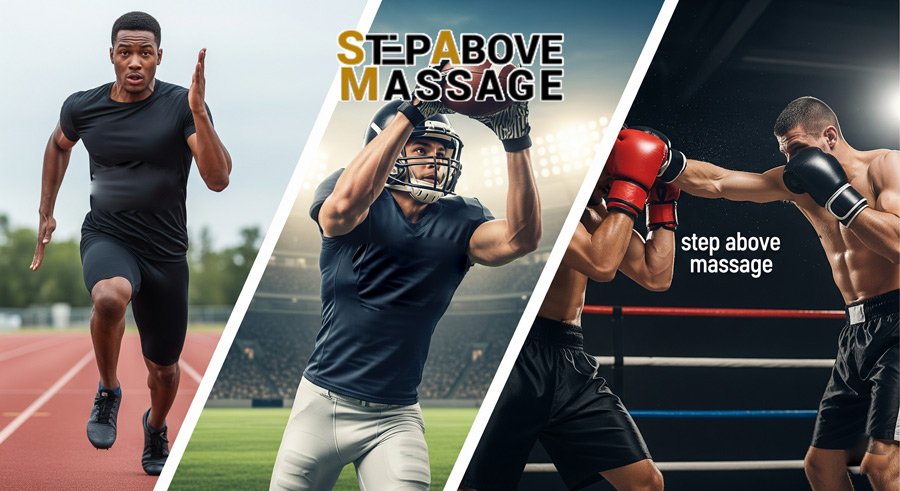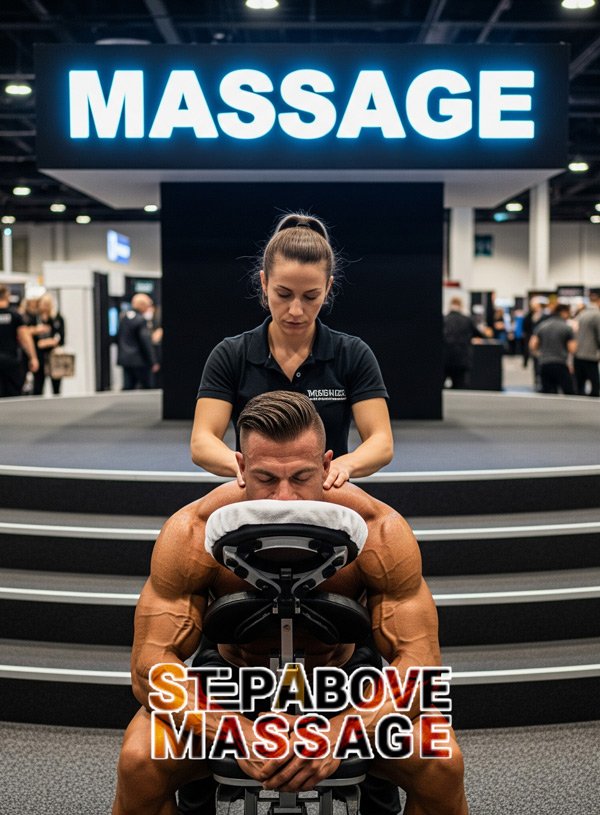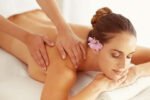
Table of Contents
ToggleBenefits of Athletic Massage for Performance and Recovery
Athletic massage is a vital tool for athletes, offering targeted relief for the demands of sports. Unlike relaxation therapies, it focuses on muscles stressed by exertion, blending techniques to ease tension, reduce fatigue, and aid recovery. From amateurs to professionals, athletes use this therapy to stay in peak condition, with research showing it reduces soreness and boosts performance. As sports intensify, athletic massage supports both physical repair and mental resilience, making it essential for success.
What Is Athletic Massage?
Purpose and Scope
Unlike massages focused on relaxation, athletic massage prioritizes function and performance. It often incorporates elements of Swedish massage, using smooth, flowing strokes to enhance circulation and ease tension. However, it also employs deeper techniques to target specific muscle groups, setting it apart from general wellness massages that emphasize comfort over athletic goals.
How It Differs from Other Therapies
Unlike massages focused on relaxation, athletic massage prioritizes function and performance. It often incorporates elements of Swedish massage, using smooth, flowing strokes to enhance circulation and ease tension. However, it also employs deeper techniques to target specific muscle groups, setting it apart from general wellness massages that emphasize comfort over athletic goals.
Key Advantages of Athletic Massage
Accelerating Post-Exercise Recovery
One of the standout benefits of athletic massage is its ability to speed up recovery after workouts or competitions. Intense exercise can lead to lactic acid buildup and metabolic waste in muscles, causing soreness and fatigue. Regular sessions enhance blood flow, delivering oxygen and nutrients to tissues more effectively. Athletes often feel less stiff and more prepared for their next training, a critical edge for consistent performance.
Studies show that this therapy can reduce delayed onset muscle soreness (DOMS) by up to 30%, enabling faster strength recovery. For instance, after exercises like downhill running, massaged muscles exhibit less swelling and quicker functional restoration. This is especially valuable during high-volume training when minimizing downtime is essential.
Boosting Performance and Flexibility
Athletic massage enhances performance by improving flexibility and range of motion. Tight muscles restrict movement, but targeted techniques lengthen fibers and reduce adhesions. This results in smoother biomechanics, enabling athletes to move with greater power and precision. Pre-event sessions warm up muscles without causing fatigue, priming the body for peak effort.
Research indicates flexibility can improve by up to 7% post-session, benefiting activities like jumping or rapid directional shifts. Over time, consistent therapy maintains muscle balance, reducing energy loss from compensating for restrictions and enhancing endurance.
Preventing and Managing Injuries
Injury prevention is vital for sustained athletic success, and this therapy plays a proactive role. By detecting and addressing muscle imbalances or tension early, therapists help prevent strains and sprains. Enhanced circulation supports joint health, making tissues more resilient. Athletes incorporating regular sessions often face fewer overuse injuries, thanks to improved body awareness.
For minor injuries, athletic massage reduces inflammation and promotes tissue repair, breaking down scar tissue to restore function non-invasively. This dual preventive and corrective approach keeps athletes active longer.
Supporting Healing and Tissue Repair
When injuries occur, targeted bodywork accelerates healing by boosting blood flow to affected areas, delivering nutrients for repair and clearing inflammatory byproducts. A study from Harvard University shows that mechanical pressure, akin to massage, removes immune cells from damaged muscles, promoting stronger regeneration. Treated areas often show larger fiber sizes and better strength recovery compared to untreated ones.
This benefit extends to chronic conditions like tendonitis, where deep massage techniques alleviate pain and restore mobility. By reducing scar tissue and boosting mitochondrial activity, the therapy supports faster recovery timelines.
Enhancing Mental Well-Being
Beyond physical benefits, athletic massage supports mental health, crucial for athletes. It lowers cortisol levels, fostering relaxation and better sleep. This mental reset reduces pre-competition anxiety and sharpens focus during training. Athletes often report greater confidence and motivation, as the therapy provides calm amidst demanding schedules.
Improved mood and reduced fatigue help prevent burnout, supporting overall well-being. For those juggling sports and daily life, this holistic care ensures sustained engagement and enjoyment.
Tailored Benefits for Specific Sports

Enhancing Cycling Endurance
Cycling requires sustained power, often leading to fatigue in quads, glutes, and lower back. Targeted therapy improves muscle coordination and reduces fatigue by boosting blood flow, helping cyclists maintain performance over long rides. It also eases tightness from prolonged postures, preventing overuse injuries.
Pre-ride sessions enhance flexibility, while post-ride ones clear metabolic waste for faster recovery. Cyclists often experience improved power output and reduced DOMS, making consecutive training days more manageable.
Supporting Swimmers’ Shoulder Health
Swimming heavily engages the upper body, with shoulders and back prone to strain from repetitive strokes. Athletic massage increases range of motion and reduces inflammation in these areas, flushing out metabolites from intense sets to speed recovery.
For competitive swimmers, regular sessions maintain shoulder health, critical for stroke efficiency. This leads to better performance times and fewer disruptions from overuse injuries.
Optimizing Running Performance
Running places heavy demands on the lower body, tightening calves, hamstrings, and hip flexors. Athletic massage targets these areas to improve stride efficiency and reduce soreness from repetitive impact. Enhanced circulation clears lactic acid buildup during long runs, while sessions address imbalances causing issues like shin splints, speeding up recovery.
Marathon runners benefit from post-race therapy, which heals micro-tears in muscles, enabling quicker return to training. Deep massage techniques are particularly effective, penetrating deeper layers to release chronic tension from high-mileage routines.
Improving Basketball Agility
Basketball’s explosive movements stress ankles, knees, and hips. Targeted therapy enhances agility by addressing muscle tightness and improving joint mobility, reducing post-game soreness for faster recovery.
Players see improved vertical jump performance, as studies show massaged muscles generate more power. This translates to on-court advantages like stronger rebounds and quicker movements.
Boosting Soccer Stamina
Soccer demands endurance, speed, and precision, often causing leg fatigue and imbalances. Athletic massage targets quads, hamstrings, and calves to enhance stamina and prevent strains. Improved circulation supports quicker recovery from sprints and tackles.
Regular sessions reduce injury risks during long seasons, ensuring consistency. Techniques promote fluid movements, aiding ball control and overall performance.
Techniques in Athletic Massage
This therapy uses varied methods tailored to athletes’ needs. Effleurage and petrissage boost circulation, while friction targets adhesions. Chair massage offers quick relief during events, ideal for on-the-go needs.
Deeper techniques, like those in deep massage, address chronic issues, while Swedish massage elements promote relaxation and flow. Therapists blend these approaches, adjusting for the sport and recovery phase.
Conclusion
Athletic massage provides a multifaceted approach to sports health, from speeding recovery to preventing injuries and boosting performance. By integrating it into routines, athletes achieve greater longevity and success. Whether for runners hitting the pavement or cyclists tackling hills, this therapy offers tailored support for body and mind.
Ready to unlock these benefits? Visit our North Carolina branches for a personalized session today. Schedule your appointment and elevate your performance.

Common Questions About sports Massage
1. What Are the Benefits of Athletic Massage for Athletes?
It reduces muscle soreness, speeds recovery, boosts flexibility, prevents injuries, and lowers stress for better focus.
2. How Often Should Athletes Get an Athletic Massage?
Every 1–2 weeks for recreational athletes; weekly for pros. Pre- and post-event sessions help, based on sport.
3. Is Athletic Massage Different from Regular Massage?
Yes, it targets sports-stressed muscles with deep massage and Swedish massage for performance, not just relaxation.
4. Can Athletic Massage Aid Injury Recovery?
Yes, it boosts blood flow, reduces scar tissue, and eases pain, helping heal injuries like tendonitis faster.
5. Who Benefits from Athletic Massage?
Athletes like runners, cyclists, swimmers, plus active non-athletes, gain recovery, flexibility, and injury prevention.



